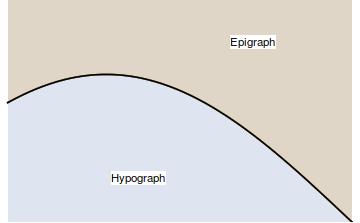Consider the function U defined on R^2, where U(x,y) = sq rt (3x + y). Which of the following statements is true? 1. U is strictly concave 2. U is strictly quasi-concave 3. U is both strictly concave & strictly quasi-concave 4. U is both concave & quasi
Please show me how to solve.. thank you.
Please show me how to solve.. thank you.
1 Answer
See below.
Explanation:
Consider the function
1. U is strictly concave
2. U is strictly quasi-concave
3. U is both strictly concave & strictly quasi-concave
4. U is both concave & quasi
Considering
we have that the hypograph of
In our case we have
Squaring both sides
and this is true for all
and as we know
The conclusions about the correct answer are left as an exercise.
NOTE


